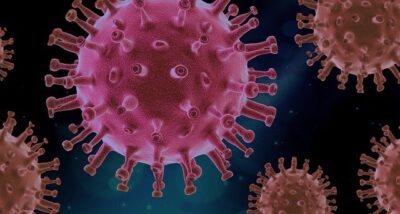Fish handler’s disease is common in the world of handling marine organisms. It is a general term describing a disease condition or syndrome of human beings that may occur after Handling fish or other aquatic organisms. The cause of infection is many species of marine bacteria, such as erysipelothrix rhusiopathiae, mycobacterium marinum, and vibrio vulnificus. One might wonder what bacteria are. These are microscopic, single-cell organisms that live almost everywhere. Some are harmful, while others are harmless to our bodies.
Handling and preparing fish and shellfish can create Small cuts and scrapes on the skin. Infection occurs when any of these bacteria penetrate the skin through the exposed wounds. Developing a fish handler’s disease requires an individual to have direct contact with fish, in most cases a lobster or other shellfish. fish handler’s disease occurs wherever fish and shellfish are handled. However, there are isolated cases among those who engage in marine activities such as researching aquatic life, water sports, etc.
Symptoms of the Fish Handler’s Disease
When caused by Erysipelothrix rhusiopathiae species, the disease generally develops within 2-7 days after bacterial infection. When caused by mycobacterium species, the Disease develops within 2-4 weeks after bacterial infection, although sometimes it may take longer.
As the bacteria launches itself on the exposed skin opening, one may notice a defined red-purple area around the infected site. The diameter of this area increases by about half an inch after a day, followed by pain, burning-itching swell, joint stiffness, and consequently lymph node swelling.
When to See a Doctor
When you realize that you are beginning to develop any skin lesions (either painful or not) after handling fish or other aquatic organisms. Additionally, after swimming, boating, or cleaning fish tanks, you should seek medical care. I emphasize that those with a suppressed immune system due to underlying conditions or old age should do so with immediate effect. Furthermore, consulting a doctor about treatment ensures that tests are done so that the appropriate antibiotic is given to treat the specific bacterial cause of the Disease. Therefore, do not use your knowledge of the fish handler’s disease to fetch antibiotics off the counter.
Treatment
All bacterial diseases require antibiotics. However, antibiotics for Fish handler’s disease may not be always needed because some patients will recover from their immune system. In case the infection does not cease, then one has to acquire the appropriate antibiotics. For fish handler’s disease caused by erysipelothrix rhusiopathiae one can use penicillin or a cephalosporin. In addition, for mycobacterium spp, patients may be treated with rifampin, streptomycin, sulfamethoxazole, trimethoprim (Bactrim), tetracyclines, isoniazid, pyrazinamide, ethambutol. Note that one may need a combination of antibiotics to treat the mycobacterium spp, which is a little resistant to regular antibiotics.
Prevention
Prevention for the fish handlers disease is simply doing everything that prevents your skin from coming into possible harm that might render it susceptible to bacterial infection. Handling fish or other aquatic organisms with visible surface lesions with bare hands increases the chances of infection.
- Always wear gloves to help prevent infections.
- Do not eat raw Aquatic animals.
- In the case of water, sport wears the appropriate protective gear and keeps to your sporting equipment.
- Individuals with other health conditions, such as diabetes or immune deficiency disorders, should be particularly cautious and consult physicians for proper wound care.
- Finally, all aquatic animals caught for meals should be cooked properly.
Infection Statistics for Fish Handler’s Disease
Though fish handler’s disease is rare, the estimated annual incidence is 0.27 cases per 100,000 adult patients. Mycobacterium marinum outbreaks were reported in many social health journals across the globe, for instance, in the striped bass USA (Gauthier et al. 2008), and in sturgeon fish in China (Zhang et al. 2015), and F1 captive-bred Australian lungfish (Strike et al. 2016).
Fish mycobacteriosis has become an important threat to the Aquatic industry, coinciding with the rapid development of sturgeon culture in China (Li et al. 2009). Mixed mycobacterial infections have an economic impact on sturgeon in China, associated with more than 50% mortality from 2009 to 2010 (Zhang et al. 2015).
Moving further, Vibrio vulnificus causes an estimated 80,000 illnesses and 100 deaths in the United States every year. Moreover, people with vibriosis become infected by consuming raw or undercooked seafood or exposing a wound to seawater. Most infections occur from May through October when water temperatures are warmer.
Subsequently, for erysipelothrix rhusiopathiae, ninety percent of the 49 reported cases of Serious erysipelothrix rhusiopathiae infection have been episodes of presumed or proven endocarditis. E. rhusiopathiae endocarditis correlates highly with occupation (fishing, marine animal exposure). It affects more males than females, exhibits a peculiar aortic valve tropism, displays a characteristic erysipeloid cutaneous lesion (in 40% of cases), and is associated with a significant mortality rate.
Check out our other blogs: Is watermelon good for ulcer?
References
Nemiroff, L., Ghaly, A., Haldane, D. J. M. and Witter, T. (2017). The Case of The Critically Ill Fisherman. Dalhousie Medical Journal.
Badan, P.S. (2016). Statistik Sumber Daya Laut dan Pesisir. Jakarta: Badan Pusat Statistik.
Liu, Z., Zhao, M. (2017). Shock Caused By Multidrug-Resistant Erysipelothrix rhusiopathiae Bacteremia: A Rare Case Report and Literature Review. The Journal of Infection in Developing Country.
Tolis, K., et al. (2015). Tenosynovitis of A Digit Due to Erysipelothrix rhusiopathiae: Case Report and Review of The Literature. New Microbes and New Infections.
Laraqui, O., et al. (2018). Prevalence of Skin Diseases Amongst Moroccan Fishermen. International Maritime Health.
eMedicine Health. Retrieved from https://www.emedicinehealth.com. Accessed on 29 November 2021.
Asakura T., et al. (2016). Disseminated Mycobacterium marinum infection with a destructive nasal lesion mimicking extranodal NK/T cell lymphoma: a case report. Med (Baltimore).


